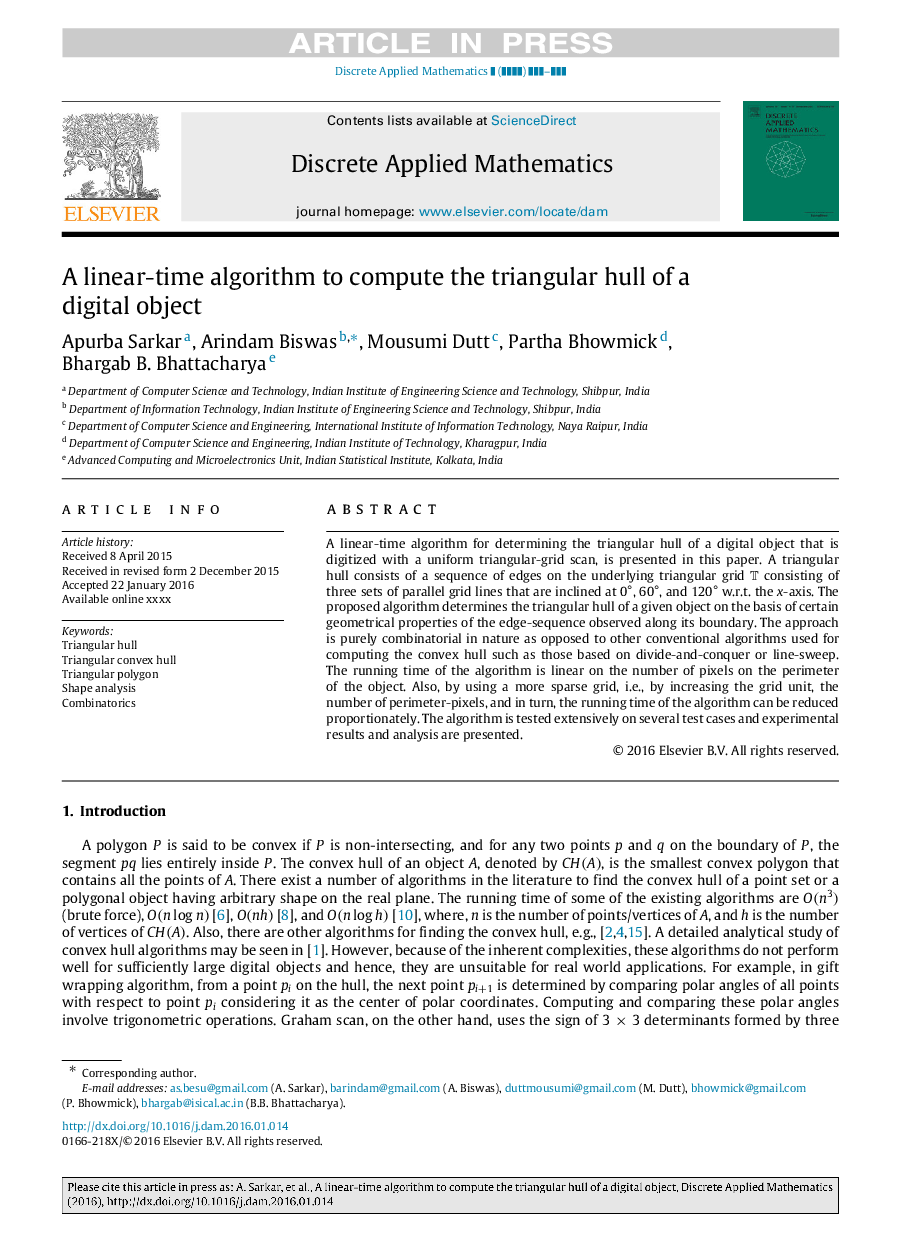| Article ID | Journal | Published Year | Pages | File Type |
|---|---|---|---|---|
| 4949870 | Discrete Applied Mathematics | 2017 | 16 Pages |
Abstract
A linear-time algorithm for determining the triangular hull of a digital object that is digitized with a uniform triangular-grid scan, is presented in this paper. A triangular hull consists of a sequence of edges on the underlying triangular grid T consisting of three sets of parallel grid lines that are inclined at 0°, 60°, and 120° w.r.t. the x-axis. The proposed algorithm determines the triangular hull of a given object on the basis of certain geometrical properties of the edge-sequence observed along its boundary. The approach is purely combinatorial in nature as opposed to other conventional algorithms used for computing the convex hull such as those based on divide-and-conquer or line-sweep. The running time of the algorithm is linear on the number of pixels on the perimeter of the object. Also, by using a more sparse grid, i.e., by increasing the grid unit, the number of perimeter-pixels, and in turn, the running time of the algorithm can be reduced proportionately. The algorithm is tested extensively on several test cases and experimental results and analysis are presented.
Keywords
Related Topics
Physical Sciences and Engineering
Computer Science
Computational Theory and Mathematics
Authors
Apurba Sarkar, Arindam Biswas, Mousumi Dutt, Partha Bhowmick, Bhargab B. Bhattacharya,
